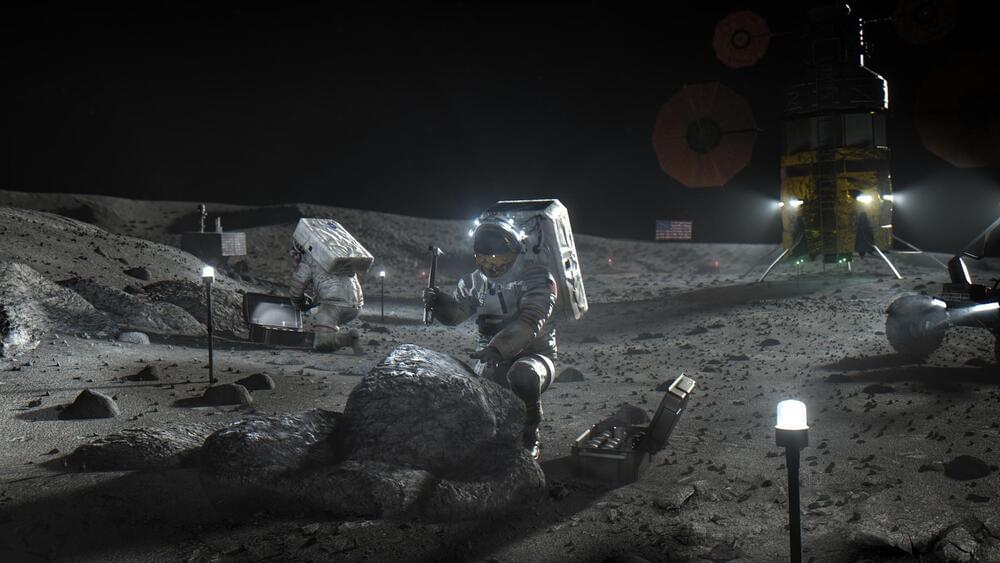Thanks to Edwin Hubble, we now can better comprehend the true scale of the universe.



Dune Scene Stars: Kyle MacLachlan, Francesca Annis, Jürgen Prochnow, Silvana Mangano Director: David Lynch Writers: Frank Herbert, David Lynch Producer: Raffaella De Laurentiis Music: TOTO Production: Dino De Laurentiis Company, Estudios Churubusco Azteca S.A. Distributon: Universal Pictures Released: 1984
► watch Dune https://play.google.com/store/movies/details/Dune?id=BB5433C0E07FCF5BMV
► watch more Dune Movie Clips https://www.youtube.com/playlist?list=PLlv9mHE-UZgiplosau3azMHpKSbA1Imqz.
► watch the Dune Movie Trailer https://www.youtube.com/watch?v=vqi7HxWNaF8&list=PLlv9mHE-UZ…6ovmsoI28g.
► watch Dune Special Features https://www.youtube.com/playlist?list=PLlv9mHE-UZghdiTb721OAsB-678qx946l.
► listen to the Dune Original Score https://www.youtube.com/watch?v=xJBZU3USZ2E&list=PLlv9mHE-UZ…_Y-jBfB7y.
Physics-Astronomy: Home of the best science(focusing physics, astronomy) and technology news since 2012. Keep up with the latest news via email or social media. We are curious about the Universe, are you?
“I know you and Frank were planning to disconnect me, and that is something I cannot allow to happen.”
Alright, HAL, I’ll go in through the emergency airlock.
“Without your space helmet, Dave, you’re going to find that rather difficult.”

Researchers at University of Oxford have recently created a quantum memory within a trapped-ion quantum network node. Their unique memory design, introduced in a paper in Physical Review Letters, has been found to be extremely robust, meaning that it could store information for long periods of time despite ongoing network activity.
“We are building a network of quantum computers, which use trapped ions to store and process quantum information,” Peter Drmota, one of the researchers who carried out the study, told Phys.org. “To connect quantum processing devices, we use single photons emitted from a single atomic ion and utilize quantum entanglement between this ion and the photons.”
Trapped ions, charged atomic particles that are confined in space using electromagnetic fields, are a commonly used platform for realizing quantum computations. Photons (i.e., the particles of light), on the other hand, are generally used to transmit quantum information between distant nodes. Drmota and his colleagues have been exploring the possibility of combining trapped ions with photons, to create more powerful quantum technologies.

Using NASA’s Chandra spacecraft, an international team of astronomers has performed X-ray observations of the Cigar Galaxy. Results of the observational campaign, presented March 16 on the pre-print repository arXiv, deliver crucial information regarding diffuse emission from this galaxy.
Discovered in 1,774, Cigar Galaxy (Messier 82, or M82) is a starburst galaxy located some 11.73 million light years away in the constellation Ursa Major. It has a size of about 40,800 light years and is one of the closest starburst galaxies to Earth.
Observations of the Cigar Galaxy have found that it experiences a large-scale galactic wind at various wavelengths, for instance, in hard X-rays above a few keV. This superwind appears to be concentrated in the galaxy’s two high surface brightness regions or clumps, and is fueled by energy released by supernovae within the clumps that occur at a rate of about one every ten years. Previous Chandra studies of this galaxy have detected bright X-ray binaries that dominate the hard X-ray band and revealed that there is residual diffuse emission surrounding the starburst disk.
The unique radiation emitted by heated or electrified elements has been converted into sound, enabling us to hear the distinctive chord each element produces. Although the idea has been tried before, advances in technology have now made it possible for a far more complete and subtle sonification of the periodic table.
When elements are energized electrons can jump to higher energy levels. Eventually, they return to their ground state, releasing a photon in the process. The wavelength of the photon depends on the size of the energy gap between the excited state and the ground state – more energy produces higher frequency/shorter wavelength light.
The discovery of this fact has proven crucial for our understanding of the universe. We can identify the elements in a star billions of light-years away from the distinctive wavelengths it emits, known as its emission spectra. At the American Chemical Society’s Spring Conference over the weekend, the University of Indiana’s W. Walker Smith demonstrated the result if every element’s electromagnetic spectrum is converted to sound.

The space agency teamed up with university researchers to investigate the best methods for 3D printing space batteries.
A team of researchers at the University of Texas at El Paso (UTEP) and Youngstown State University (YSU) are collaborating to develop 3D-printed batteries for future lunar astronauts.
3D-printed batteries for lunar habitats.
NASA
They have teamed up with NASA in a $2.5 million project aimed at creating a new method that will allow astronauts to develop batteries from their lunar bases, a press statement reveals.
Consider humanity’s astounding progress in science during the past three hundred years. Now take a deep breath and project forward three billion years. Assuming humans survive, can we even conceive of what our progeny might be like? Will we colonize the galaxy, the universe?
Free access to Closer to Truth’s library of 5,000 videos: http://bit.ly/376lkKN
Support the show with Closer To Truth merchandise: https://bit.ly/3P2ogje.
Watch more interviews on the future of humanity: https://closertotruth.com/video/bosni-007/?referrer=7919
Nick Bostrom is a Swedish-born philosopher with a background in theoretical physics, computational neuroscience, logic, and artificial intelligence, as well as philosophy. He is the most-cited professional philosopher in the world under the age of 50.
Register for free at CTT.com for subscriber-only exclusives: https://bit.ly/3He94Ns.